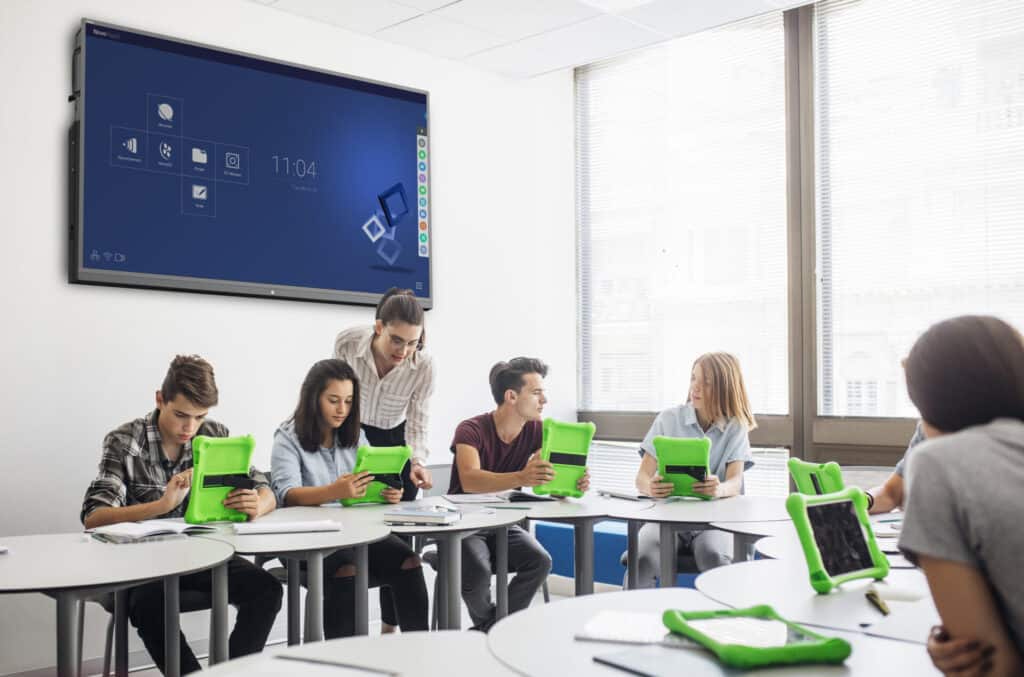In most countries, the COVID-19 pandemic has impacted virtually every facet of society. In particular, it has had a marked influence on education, with almost 1 billion learners around the world being forced to work in hybrid learning and non-instructional spaces.
Challenges in Education beyond COVID-19
With many governments implementing stringent social distancing measures, school closures have been occurring progressively around the world since January. This has forced educators to rethink their approach to teaching, and governments, school administrators, teachers, and students have all had to adapt to a sudden change in how classes are taught. Schools and universities have been experimenting with different teaching formats, utilizing various technologies, such as apps to disseminate class content and video conferencing to host classes, and many are still trying to work out the best way to teach effectively with these. Teachers have had to develop new teaching material and effective means to deliver class content while monitoring student progress, and students. To say that this has been challenging is an understatement.
Schools in many countries are looking to reopen again in the near future. Many are considering implementing a combination of in-person and distance learning approaches, and they are largely still figuring out how to design high-quality, equitable instruction in the face of social distancing. With hybrid teaching styles and non-instructional teaching presentation systems offer a means to overcome some of the difficulties schools may face with social distancing regulations that are expected to be in place when schools reopen. Teachers and students will require technologies that make it easier for teachers, students, and school administrators to communicate and collaborate more effectively.
Driving Collaboration with a Versatile Solution

With growing attention on new teaching methods to cope with the COVID-19 pandemic and the difficulties involved in implementing them, it is critical for schools to adopt solutions that are not only simple and efficient, but they must also offer long-term investment value. One ideal solution is Vivitek’s Novo Ecosystem, which includes the NovoConnect and NovoDS solutions. NovoConnect is a powerful wireless collaboration tool that is simple and efficient to use, making it easy to teach and share information across multiple spaces. Students and teachers can easily share content from their personal devices to larger screens, offering flexibility that encourages interaction and enhances discussion.
It is simple to connect, with support for BYOD, remote apps, and QR codes for instant access via your computer, phone, or tablet device. It facilitates content sharing by making content viewable on large screens, including split screen capability and AES-256 encryption for security. It is also easy and versatile to configure from a single piece of software, making management easy. As an All-in-One solution, NovoTouch interactive displays are versatile touch panel displays that combine wireless collaboration, digital whiteboard, and active announcement board functionality. They can be used by up to 64 people at the same time, by either interacting directly with the screen or connecting wirelessly from a digital device.

With a built-in browser and casting support for iOS Airplay, Android Google Home, and the NovoConnect app, these interactive displays are highly flexible for instructors and students, delivered in 4K brilliance. The screen sharing feature in particular could easily be utilized to divide students into small groups to collaborate while maintaining social distance.
On the other hand, schools can broadcast messages through the NovoDS digital signage solution, which is a very affordable and simple, network-based solution that combines the hardware and software that schools will need to create engaging, dynamic visual displays. Creating content is easy and intuitive, with draw and drop support, online widgets, and customizable templates. Rich content can be scheduled with multimedia and 4K support. Moreover, content can be managed centrally via the cloud and mobile devices, and modify remotely by API solution for third-party platforms.
To maintain social distancing, schools can utilize digital signage systems to centrally design, publish, and manage messages or learning materials to multiple displays at the same time. It offers the potential to completely transform traditional classrooms by allowing classes to work together from different rooms, and also provides a means for broadcasting important information.

